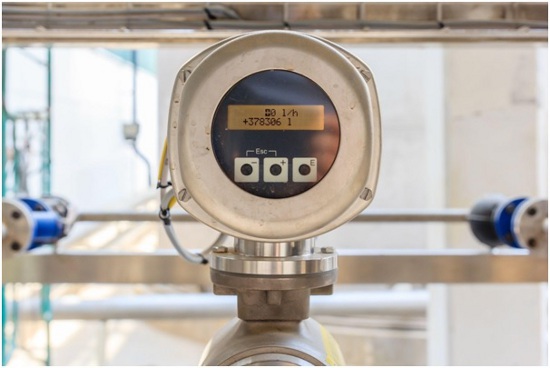Types of Flow Meter


Turbine Flow Meters
Turbine Flow Meters are used for precise liquid measurement and consist of a pipe mounted on a multi-bladed rotor that rotates. Magnetic pick-up, photoelectric cells, or gears can be used to measure rotational speed, which is a direct function of flow rate.
Ultrasonic Flow Meter
There are two types of ultrasonic flow meters- Doppler meters and Time-of-Travel (or Transit) meters. Doppler meters track frequency changes brought on by liquid flow by sending a signal with a known frequency into the liquid being measured. The frequency shift grows directly as the liquid’s speed does. Transit meters are set up so that sound waves moving between them make a 45° angle with the direction of liquid flow.
Differential Pressure Flow Meter
A differential pressure flow meter is the most widely used device for measuring fluid flow, consisting of two parts: a primary element that alters kinetic energy and a secondary element that provides a signal.
Orifice Flow Meters
Orifice flow meters are the most widely used liquid flow meters, consisting of a flat piece of metal with a hole of a specific size. They are mounted in the pipe between two flanges and limit liquid flow to exert a differential pressure across a plate. They are a great option for pipes of all sizes due to their lack of moving parts and low cost.
Venturi Flow Meters
Venturi tubes are segments of pipe with a tapered entrance and straight throat, fitted with flanged, welded, or threaded end fittings, and having four or more pressure taps to average the pressure.
Pitot Tube Flow Meter
Only single-point measurements may often be made using pitot tubes. The units could become clogged if there are foreign particles in the liquid. Pitot tubes provide a number of advantages, including low cost, the absence of moving components, ease of installation, and little pressure loss.
Positive Displacement Flow Meters
Positive-displacement flow meters divide liquids into discrete increments and count each segment, making them useful in automatic batching and accounting applications.
Volumetric Flow Meters
Volumetric flow meters operate linearly and are more flexible due to their lack of a square-root relationship, enabling direct attachment to pipelines.
Mass Flow Meter
Mass flowmeters were created in response to the need for more precise flow measurements in mass-related processes. The Coriolis mass flow meter is the most commonly used for applications involving liquid flow. Mass meters measure the mass rate of flow and are linear without needing to be adjusted for changes in liquid properties.
Electromagnetic flow meters are the most commonly produced flow meter type among flow meter suppliers in India.
Applications of Flow Meters
Below are a few uses for electromagnetic flow meters.
1. Chemical Industry:
Like the petroleum sector, the chemical industry extensively relies on mag meters to produce precise and accurate measurements of product flow. They should be utilized with care because a mistake in computation might have dire effects. Mag meters are necessary to guarantee accurate and exact chemical readings, which helps with product quality and system security.
2. Distilleries:
They must guarantee the quality and standards of the goods being produced in the distillery industry. They are used in the monitoring, recording, controlling, and measuring of liquid flow. Mag meters are insensitive to variations in temperature, pressure, and liquid, so there is no need to alter the meter during an operation switchover, which is advantageous for the distillery industry.
3. Mining:
To maintain safety, mining activities need precise management and monitoring of thick, heavy muck. To regulate slurry flow and movement, mag meters are used to measure flow independent of density or viscosity. The data is acquired and converted into mass flow measurements.
4. Brewery application:
Precise and exact measurements are utilized to guarantee that the proper amount of water is provided and to prevent waste. Breweries must reduce expenses associated with water use, product waste, and wastewater in order to make a profit. Throughout the whole process, utilities, storage, and packaging are employed in the brewhouse.
5. Water treatment facilities:
It is used to keep an eye on the condensed, chilled, and hot water network flows. The technique will improve the facility’s capabilities and provide more reliable water treatment techniques and technology.
6. Slurry measurement:
They are used to measure suspended particles, which may be challenging because of their abrasive nature and the damage they cause to mag meters. These materials include cement, coal, and fly ash. Electromagnetic flow meters that were expressly constructed for these conditions are utilized since they don’t have their readings affected or damaged by the properties of the flow material.
7. Heated Fluids:
Many applications call for the recovery of hot fluids that must be thrown away or transported in order to be recycled, cleansed, or stored. To guarantee the precision of all the various operations, the volume must be measured accurately. It has been found that the only type of mag meter that can withstand heat and tolerate the particle content of heated liquids while still producing reliable data is an electromagnetic flow meter.
















